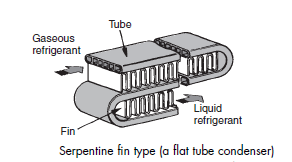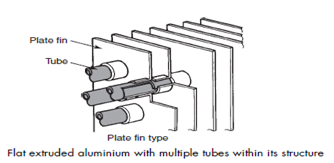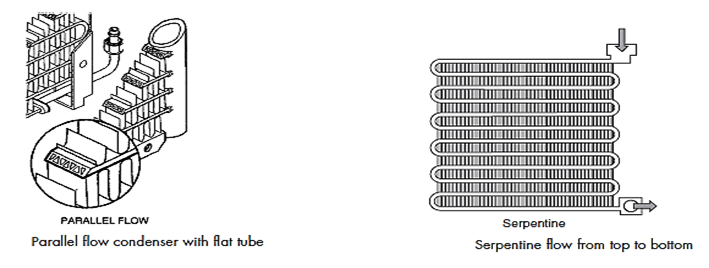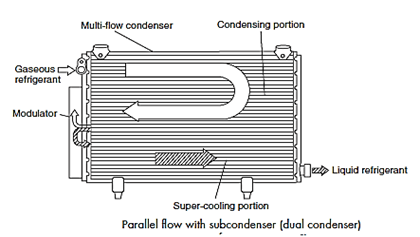The Condenser
Introduction:
The function of the condenser is to act as a heat exchanger to dispel the heat energy contained in the refrigerant. The condenser must be highly efficient but as compact as possible. Condensers are used in outdoor air conditioning systems as well as heat pump systems. The condenser is located at the front of the vehicle where strong air flow through its core can be achieved when the vehicle is in motion.
Condenser design
The ideal condenser should have no pressure drop between the inlet and the outlet. Condensers are generally made from aluminium to prevent any chemical reaction between the metal and refrigerant/oil mixture. They are generally constructed with tubes and fins. Tubes to carry the refrigerant and fins to increase the surface area in contact with the outside air. Their shapes vary and include:
Serpentine fin type Tube and plate type


Tube and plate and fin types have been used for a number of years and can be seen on R12 systems but are not generally used on R134a systems. This type of condenser can also be backflushed to remove any foreign particles within the system.
Parallel flow type (a flat tube condenser) Condenser refrigerant flow

Parallel flow condensers are very efficient, the condenser breaks up the flow into tiny streams enabling it to transfer heat more rapidly. This type of condenser cannot be flushed and if it becomes blocked can only be replaced. Serpentine flows through the tube(s) evenly eventually condensing while following the same path.
Dual condenser

- This layout includes a condenser with an integrated multi-flow condenser and a gas/liquid separator (modulator) – a subcool cycle.
- In simple terms these are two condensers stacked on top of each other with a receiver drier called a modulator between the two.
- They are generally used in vehicles with large internal space and cooling requirements